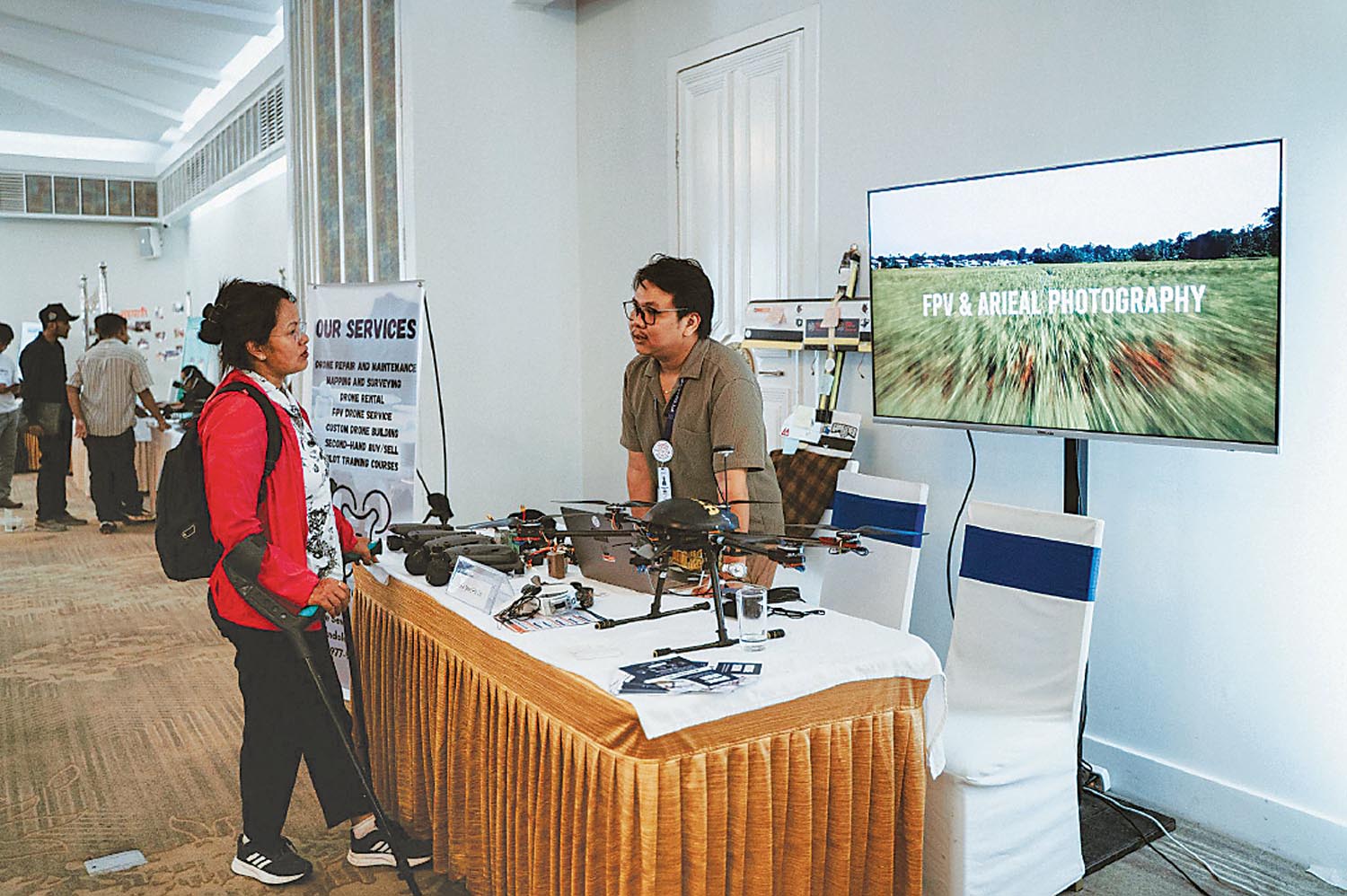Money
Nepal’s drone industry takes flight, but rules keep it grounded
Young innovators push boundaries, with regulators yet to catch up. From farming to rescues, technology shows promise but lacks official support.
Ellie Davis
Adarsha Bhusal and his team at GarudX, a Nepali company focused on drone manufacturing, invested Rs1.2 million to build one of the first drones designed and assembled in Nepal. But instead of soaring, their project has stalled on the runway.
Every drone in Nepal requires a “remote ID,” a unique number that verifies and identifies the aircraft. The problem is that Nepal’s government has no system to test drones or issue these IDs. Without one, Bhusal’s drone cannot legally fly.
“We’ve proven our designs work but there’s no process to get them officially cleared for use,” Bhusal said. “No testing zones, no labs for airworthiness. There’s no way to register this drone as the first one.”
To move forward, Bhusal and his colleagues are trying to register through India’s Directorate General of Civil Aviation in order to gain clearance to operate in Nepal. But for now, they are stuck.
“It’s frustrating, but I don’t see it as a reason to stop,” he said. “Nepal is still at the starting line with this technology, and we’re navigating that path.”
Nepal’s drone industry is expanding rapidly, but regulations have failed to keep pace.
Industry leaders highlighted the opportunities and challenges shaping the sector at a recent drone showcase event in Kathmandu, which was organised by Impact Hub Kathmandu and Impact 447 with World Bank funding.
For Kumar Paudel, executive director of Geovation Nepal, drones are essential for navigating Nepal’s complex geography.
“Drones lift materials to the mountains and carry raw supplies for construction in challenging terrains,” he said.
In the Everest region, drones are already deployed to carry waste across rugged trails, while rescue drones searching for lost climbers have saved lives.
Geovation Nepal’s imported drones—from China and Switzerland—serve diverse purposes.
One model sprays fertilisers across farmland in a fraction of the time it would take human labourers. Another streamlines hydropower surveys by mapping terrain with geospatial imaging. A thermal drone has helped conservationists count Himalayan blue sheep in the Upper Dolpo by detecting their body heat.
Yet, Paudel said, progress is slowed by rules that do not reflect technological advances. For example, Nepal’s Civil Aviation Authority bans drone flights at night or in the rain without special clearance.
“Our drones have the capacity to fly in rain as they are designed for agriculture,” Paudel said. “But regulators are not aware of this advanced capacity.”
According to the World Bank’s Drone Ecosystem Acceleration Project, these mismatches are industry-wide. A recent report warns that conflicting directives from the Ministry of Home Affairs and the Civil Aviation Authority have created confusion. The absence of a formal licensing system for drone pilots, it says, has led to inefficiencies, safety risks, and inconsistent oversight.
The report urges Nepal to create a comprehensive national framework aligned with international standards to govern the sector.

Few expect swift reform. In the meantime, drone engineers argue that Nepal should at least harness drones for disaster response and emergency management.
Earlier this year, Bhusal’s team spent six weeks designing a drone-mounted lifejacket release system for the Nepal Police. The project was fast-tracked after the Home Minister ordered that it be ready before the monsoon. Engineers waterproofed the police’s Matrice 600 drones to withstand heavy rain and built a mechanism to drop lifejackets to flood victims.
“The process was trial and error, as it had never been done before,” Bhusal said.
Though the devices haven’t been deployed in an emergency, they are now stored in police vehicles and ready for use.
Bhusal has long championed drones as tools for saving lives. “Many people see drones as machines of war—I want to flip that perspective,” he said. “For me, drones are about saving lives.”
His fascination with drones began at age eight, when he built a crude model from wood, PVC pipes, and salvaged parts. After several failed attempts, the homemade machine lifted off. “It was unstable, but the excitement I felt watching it rise into the air for the first time is something I’ll never forget,” he said.
That childhood curiosity evolved into a profession. Bhusal has flown drones for commercials and films, co-founded the Nepal Drone Racing League—now boasting more than 140 active pilots—and eventually launched GarudX.
Industry leaders agree that Nepal needs more trained experts. Geovation is developing a drone flying academy, while the Elevate Nepal project—run by Impact 447 and Impact Hub Kathmandu—is training 50 young people in drone fundamentals in partnership with Airlift Ventures. Twenty of those trainees will continue into apprenticeships with local drone companies.
For Aradhana Gurung, co-founder and CEO of Impact 447, cultivating young talent is essential. “It’s about strengthening the drone ecosystem,” she said. “That means creating livelihood opportunities in the country and building a talent pool that feeds into the industry.”
Despite hurdles, Bhusal remains optimistic. “In the next five years, I want GarudX to put at least one product on the world stage, whether that’s a motor, an airframe, or a full drone platform,” he said.
“What started as a childhood curiosity with plastic bottles has become a mission,” he added. “It’s no longer just a passion project—it’s my life, livelihood, and way of showing that innovation can come from Nepal too.”




 18.12°C Kathmandu
18.12°C Kathmandu














